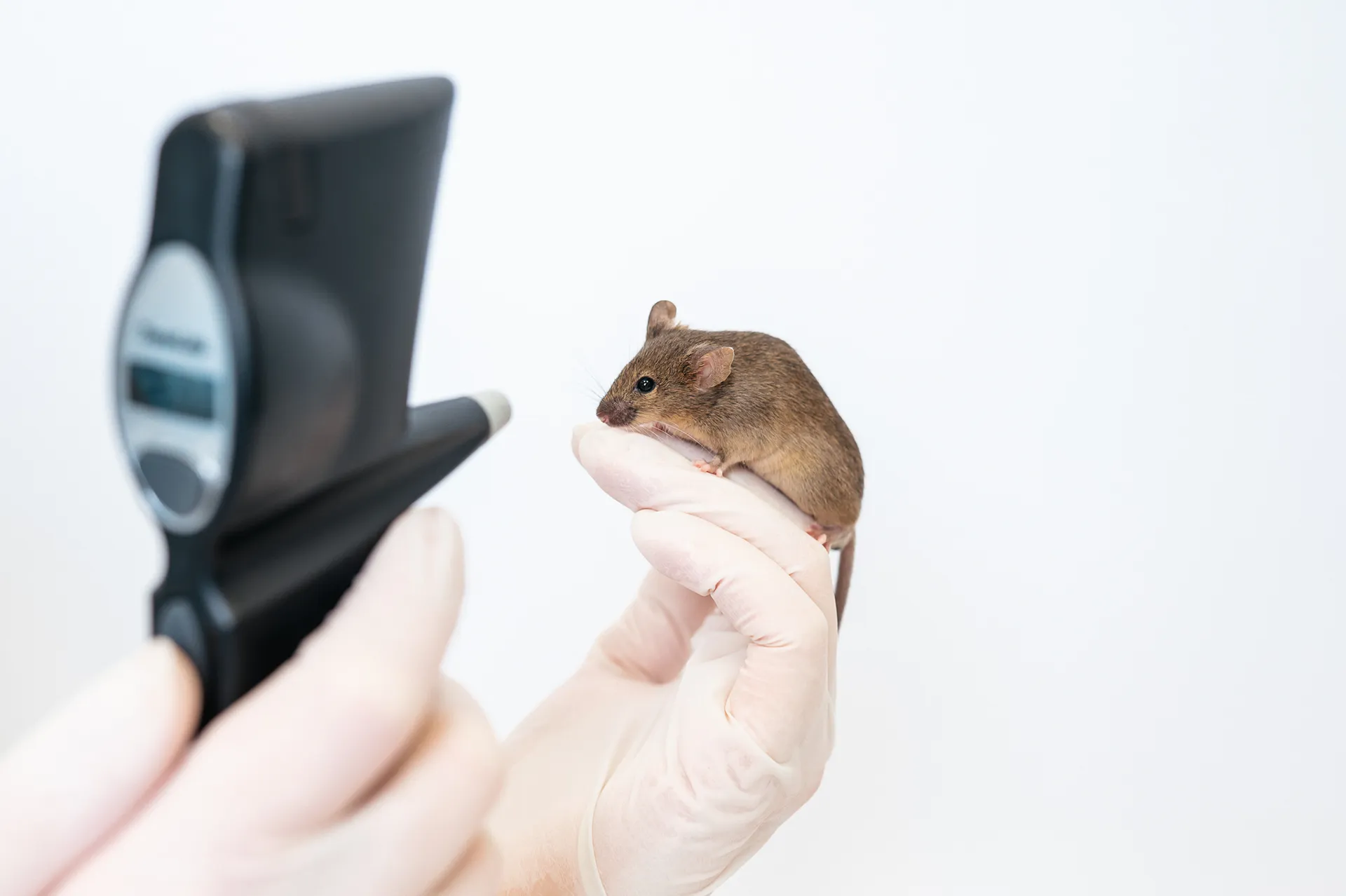ARVO 2025 presentation: Morphological, functional, and behavioral alterations in a microbead-induced mouse glaucoma model


Elevated intraocular pressure (IOP) was induced in 10-week-old male C57BL/6JRj mice (N=14) through intracameral unilateral injection of magnetic microbeads on Day 0. IOP was monitored using the Tonolab rebound tonometer up to Day 31 post-induction. On week 4 post-induction, spectral-domain optical coherence tomography (SD-OCT) imaging was performed to quantify the inner retinal thickness (INL). Pattern electroretinography (pERG) was recorded to assess retinal ganglion cell function. In addition, visual acuity (VA) and contrast sensitivity (CS) were evaluated on Day 31. On the same day mice were sacrificed, retinas were collected for retinal ganglion cell immunostaining with anti-RBPMS antibody and quantification of RBPMS-positive cells using stereology.
IOP was significantly elevated by Day 3 as compared to contralateral eyes (17.6 ± 1.3 vs. 10.1 ± 0.1 mm Hg) and remained significantly elevated throughout the whole follow-up period of 31 days. On Day 31, INL thickness was significant decreased in microbead-injected eyes as compared to naïve eyes (85.7 ± 3.7 vs. 97.6 ± 0.5 µm, respectively, P<0.001). Similarly, microbead-injected eyes had significantly decreased pERG amplitude (2.4 ± 0.6 vs. 6.0 ± 1.0 µV, P=0.007) as compared to naïve eyes. Furthermore, a significant decrease was observed in both optomotor reflex parameters VA (0.178 ± 0.038 vs. 0.389 ± 0.001 cycles/°, P<0.001) and CS (52.0 ± 16.5 vs. 8.4 ± 0.7 %, P=0.03) in microbead-injected eyes as compared to naïve animals. The number of RBPMS-positive cells decreased by 28% in the microbead-injected eyes as compared to healthy contraletaral eyes (2192 ± 102 vs. 3040 ± 69 cells/mm2, P<0.001). Cumulative IOP showed no significant correlation with INL thickness, OMR measurements or RBPMS-positive cell numbers, but significantly correlated with pERG amplitudes (r = -0.7545, P<0.005).
Cumulative IOP has a significant correlation with RGC function in the magnetic microbead-injected mouse model.
Kernius Mickevičius, Tomas Paulauskas, Ugnė Bytautaitė, Justina Urbanavičiūtė, Inesa Lelytė, Symantas Ragauskas, Giedrius Kalesnykas
Check out our latest news and activities
All News
Copyright: Experimentica Ltd. 2025